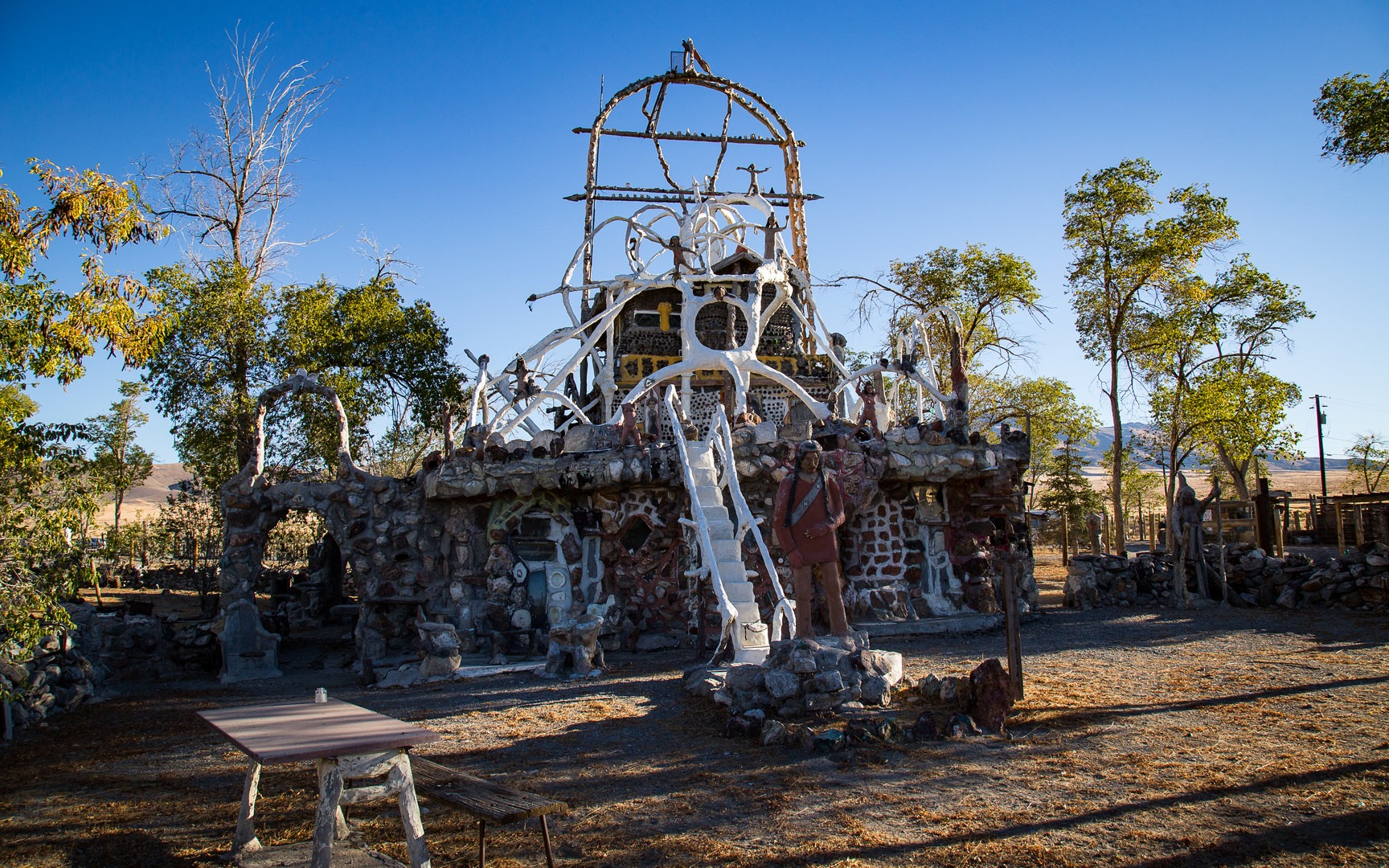You are here
The Thunder Mountain Monument sits in limbo off of Interstate 80 in northern Nevada. The site is a completely unique monument and the product of a decades-long effort by Frank Van Zant, a native-Oklahoman and member of the Creek Nation. While the monument is underfunded and in disrepair, several dedicated people volunteer their time and energy to perform maintenance.
Visible alongside the freeway near the town of Imlay, Nevada (population 171), the odd collection of statuary and building remnants is the current condition of Van Zant's vision. Constructed and dedicated to remembering the suffering of indigenous people at the hands of European invaders, Van Zant - a former U.S. military tank and airman, law enforcement officer, and studying priest - worked seven days a week throughout his retirement years building the monument.
Much of the building materials were cast-off trash and debris that littered the desert area within a 50 mile radius of the site. Cars, bottles, windshields and assorted metal debris have been incorporated into the construction of the varying structures throughout the property. Van Zant wanted this to be an ecological statement on the waste of white travelers in the area, and it followed in his belief that the Great Spirit provided for his people. Over the course of the monument's construction, the only material that Van Zant purchased was cement.
Of the over-200 original sculptures, Chief Rolling Thunder Mountain included tributes to Native figures and peoples of all tribes, regions, and age. In recognition of his intent, many were built with agony on their faces. One sculpture inside the building portrays a settler shooting a Native American woman.
Ongoing construction during the 1960s and 1970s saw those from the hippie and drop-out scenes gain an interest in Van Zant's effort, and a hostel building was constructed to house those who would put in work on the monument in trade. The sprawling collection of structures eventually included the main cabin, a three-story hostel, an underground hut, a children's playground, and scattered shacks, along with many statues throughout the grounds.
The monument was never completed, but work continued even when parts of the monument began to be suffer damage or decay. In the 1980s, a fire torched the hostel and Van Zant's wife left him. Van Zant remained in the northern Nevada desert working on his project. In 1989, Frank Van Zant left a note deeding the property to his oldest son, Daniel Van Zant, and committed suicide inside the main cabin.
Since that time, weather, vandalism and normal wear-and-tear have taken hold on the property, while Daniel Van Zant has continued to work part-time in order to maintain and restore the project.
Recognized as a State of Nevada Historical Site, the monument is funded completely by donations, and it is maintained through the work of volunteers.
Visitors are welcome to walk the grounds during daylight hours. While the remnants of some of the buildings can be entered, others are off-limits. A gazebo houses an interesting account of the monument's history and intent. The still desert air in this distant part of Nevada imparts a quietness that surrounds the aging monument.
This type of artifact can fall into the category of outsider art, as Chief Rolling Mountain Thunder worked tirelessly on his vision even after everyone else left his side. But it is important to remember the people to whom the monument is dedicated and the artistic statement manifested in the choice of discarded materials used to construct this monument.
There are no signs advertising the monument, though the strange sculptures rising from behind the thin trees mark its location. A more thorough history of the Thunder Mountain Monument can be found here.
Logistics + Planning
Current Weather: Powered by Dark Sky
























Comments
Sign In and share them.